Top 13 latest technology in mechanical engineering
In this article we talk about latest technology in the mechanical engineering and detail information about that technology. Lets dive in into that.
Table of content
1. Fourth industrial revolution
2. 4D printing technology
3. Nanoelectromechanical system
4. Hyper loop technology
5. Air brake system
6. 3D metal printing
7. Computational fluid dynamics
8. Flywheel energy storage
9. Industrial internet of thing
10. Beam energy propulsion
11. Automated vehicle
12. Supersonic combustion ramjet
13. Advance in gas turbine technology
• Fourth industrial revolution
In your mind, questions arises what’s industrial revolutions concern or deals with mechanical engineering.
Here is the answer , any revolution always good industries because of its improve the quality or efficiency of the product.
Definition of Fourth industrial revolution in simple word is the connection between physical, biological, and digital.
Fourth industrial revolution is combination of AI intelligence, 3Dprinting, robotics, Internet of thing (IOT), genetic engineering, quantum computering, and other technology.
These are the collection behind of many product which is vary fast. And the requirement of the modern life.
For example, GPS Suggest the fastest route to the destination. Voice-Active virtual assistance like Siri, google assistance and other many more.
Amazon recommendation and Facebook ability to recognize your face and tag you in friends photo.
This happen because of the fourth industrial revolution. Because of this technology we changing our living life. Its more easier this way.
Fourth industrial revolution also rapidly change in any other business sector.
Its build by the three basic revolution such as first steam engine developed in 18th century(first revolution).Next is allowing production to be mechanized for the first time.
In the next revolutions, electrical and other technologies, produce a mass productions in manufacturing.
And third revolution was began in 1950s development of the computer which leds to Non-conventional process with more acquires in product.
• 4D printing technology
Imagine, you buy shoes which can adjust according to foot size. Yes this possible by the 4D printing.
Definitions of 4D printing is 3D printing gives product which can change size with time.
4D printing have additional dimensions called fourth dimension: time.
So technology is combinations of 3D printing and high level material science, engineering and software.
In 4D printing, material is play key role which is material design special and it can change its size according to the requirement.
fabrication of the object to transform include temperature change, light, water, magnetic field, as well as chemical, and other environmental factors.
When external source acting on 4D printing product, they can change size according to the requirement of the external source.
Now, you have question about how does 4D printing different than the 3D printing.
Let me answer this question, 3D printing is part of modern manufacturing and rapid prototype technology.
3D printing produce part layer by layer in the three dimensional way.
In 4D printing, the principle same as that of principle of 3D printing but additional part of this technology is it can change size over time.
But 3D printing have the fix position of object size.
The geometric code is add that contain "instructions" how shape will change or move over time during 4D process.
During producing any object or part by 4D printing we required to consider atmospheric conditions.
- Nanoelectromechanical system
In simple word, Nanoelectromechanical Is combination of electrical and mechanical in the nanoscale.
Nanoelectromechanical is advance level (version) of the micro electrochemical.
In NEMS, transistor like Nano electronic with mechanical actuators, pump, and motor.
And also physical, biological, and chemical sensors.
Construction of NEMS device in the Nano scale with low mass, high mechanical resonance frequency.
Potentially large quantum mechanical effect with zero point motion.
And high surface to volume ratio useful for surface base sensing mechanisms.
Application include accelerometers and sensor to detect chemical substance in air.
Many type of NEMS system has carbon material for construction of device, e.g. diamond is most favourite.And also carbon nanotube and graphene.
The choice of carbon because of properties of carbon which directly meet requirement of NEMS.
Both diamond and graphene has high young modulus, low density, low friction, exceedingly low mechanical dissipations and high surface area.
• Hyper loop technology
Hyper loop technology is used for passenger and good transportation. This technology is developed by spaceX and tesla.
How does work hyper loop technology?
Hyper loop technology is new fast transportion system which work between two cities.
Hyper loop works by launching pods which carry people through very low air pressure tunnel.
The hyper loop reduce friction between pods and the tunnel. The tunnel support the pods and provide cushions air.
What is the concept of hyper loop technology?
Hyper loop is sealed tube or system of tubes with low air pressure through which pods travels through with no frictions.
First concept which reduced the air pressure. pods which have high pressure, they can travel through low air pressure with air bearing.
Pods driven through induction motor and axial compressor.
what kind of hyper loop technology?
Hyper loop technology is also called as hyperloopTT. SpaceX and tesla both developed this hyper loop technology.
Hyper loop technology is transportation system which drive people from one place to another place.
Is this possible hyper loop technology?
Hyper loop technology is transportation system which works on electrical power. So it is possible.
• Air brake system
An air brake or, more formally, a compressed air brake system, is a type of friction brake for vehicles.
compressed air pressing on a piston is used to apply the pressure to the brake pad needed to stop the vehicle.
How does an air brake system work?
Air brakes are likely the most important component part of modern commercial motor vehicles.
The air brake system on a commercial motor vehicle (CMV), or semi-truck as commonly referred.
compressed air to push the brake shoe lining onto the brake drum creating friction to slow the wheel down.
What are the five basic components of an air brake system?
5 Basic Components of an Air Brake System in Trucks
Air compressor.
Reservoirs.
Foot valve.
Brake chambers.
Brake shoes and drums.
Why air brakes are used in trucks?
Air brakes are used in heavy commercial vehicles due to their reliability.
They have several advantages for large multi-trailer vehicles:
The supply of air is unlimited, so the brake system can never run out of its operating fluid, as hydraulic brakes can.
Minor leaks do not result in brake failures.
What is the dual air brake system?
A dual air brake system has two separate air brake systems, which use a single set of brake controls.
Each system has its own air tanks, hoses, lines, etc.
One system typically operates the regular brakes on the rear axle or axles.
• 3D metal printing
Metal 3D printing processes can be used to manufacture complex, bespoke parts with geometries that traditional manufacturing methods are unable to produce.
The build size of the metal 3D printing systems is limited, as precise manufacturing conditions and process control are required.
Can a 3d printer print metal?
Metal 3d printing, also known as direct metal laser sintering (DMLS) and direct metal laser melting (DMLM) is an additive layer technology.
Other metal 3d printing processes exist which use a binder, although they produce parts which are not fully dense metal.
How much does it cost to 3d print metal?
Though not all metal 3D printers use metal powder, a kilogram of this material alone can cost between $300 and $600.
Similarly, post-processing requirements depend on which technology you use.
Is 3d printed metal strong?
Tests showed that under certain conditions the final 3D printed stainless steels were up to three times stronger than steels made by conventional techniques and yet still ductile, the scientists report today in Nature Materials.
Who invented 3d metal printing?
In the late '80s, Dr. Carl Deckard of the University of Texas developed the first laser sintering 3D printer of plastics.
This invention paved the way for metal 3D printing. The first patent of laser melting of metals was filed in 1995 by the Franchiser Institute in Germany.
• Computational fluid dynamics
Computational fluid dynamics (CFD) is a branch of fluid mechanics that uses numerical analysis and data structures to analyze and solve problems that involve fluid flows.
What is meant by computational fluid dynamics?
Computational fluid dynamics (CFD) is a science that, with the help of digital computers, produces quantitative predictions of fluid-flow phenomena based on the conservation laws (conservation of mass, momentum, and energy) governing fluid motion.
Is computational fluid dynamics hard?
Computational fluid dynamics (CFD) simulation has long had the reputation of being too difficult, slow, and expensive to be performed as part of the mainstream design process.
In many scenarios, the experiments are close to impossible because of certain constraints which are no limitation for CFD.
Why is Computational Fluid Dynamics important?
Computation fluid dynamics (CFD) is an engineering tool used to simulate the action of thermo-fluids in a system.
It is used by many industries in their development work to analyze, optimize and verify the performance of designs before costly prototypes and physical tests
When was computational fluid dynamics invented?
1970's
Introduction. The history of the Computational Fluid Dynamics, or CFD for short, started in the early 1970's. Around that time, it became an acronym for the combination of physics, numerical mathematics, and, to some extent, computer sciences all employed to simulate fluid flows.
How does computational fluid dynamics work?
Computational fluid dynamics (CFD) is a branch of fluid mechanics that uses numerical analysis and data structures to analyze and solve problems that involve fluid flows. .
In addition, previously performed analytical or empirical analysis of a particular problem can be used for comparison.
What is fluid dynamics used for?
Fluid dynamics provides methods for studying the evolution of stars, ocean currents, weather patterns, plate tectonics and even blood circulation.
Some important technological applications of fluid dynamics include rocket engines, wind turbines, oil pipelines and air conditioning systems.
What is CFD and its application?
CFD uses powerful computers and applied mathematics to model fluid flow situations.
Several areas of CFD applications includes architecture, chemical and process engineering, electronics and computer, HVAC (heat, ventilation &cooling), petroleum, train design, turbo machinery etc.
• Flywheel energy storage
Flywheel energy storage works by accelerating a rotor to a very high speed and maintaining the energy in the system as rotational energy.
How does flywheel store energy?
Flywheel energy storage systems (FESS) employ kinetic energy stored in a rotating mass with very low frictional losses.
Electric energy input accelerates the mass to speed via an integrated motor-generator.
The energy is discharged by drawing down the kinetic energy using the same motor-generator.
How much energy can be stored in a flywheel?
The spinning speed of modern flywheel energy storage system can reach up to 16,000 rpm with a capacity of up to 25 kWh.
Flywheel have low maintenance costs, and their life-span can be long.
There is no greenhouse emission or toxic material produced when flywheels are working, so it is very environment-friendly.
Is free energy possible with flywheel?
The AC generator have produce extra electricity by using of flywheel from 1 HP motor.
The main advantage of Free energy generator using flywheel is that it can generate energy without used of any extra equipment and this free energy generation is non-hazardous and environmental friendly.
Why are flywheels so expensive?
The idea is that the rubber creates smoother operation of the clutch release and reduces vibration in modern cars.
The main reason these jobs tend to be more expensive than with typical older type clutch jobs is the price of the parts.
A standard style flywheel is much more durable so does not often need to be changed.
What does a heavier flywheel do?
The heavy flywheel helps RPM recovery, allows the engine not to lug during the gear transmission.
The light flywheels decrease the inertia, so it gives a quick response to acceleration and deceleration. For this reason, light flywheels are used in the sports car.
What is the principle of flywheel?
A flywheel depends on a rotating mass to store energy which is then held in the kinetic energy of rotation of the rotor.
The stored energy is proportional to the moment of inertia of the rotor about its axis (directly related to its mass) and its rotational speed.
What is the function of flywheel?
The Flywheel has 3 main functions. The first is to maintain a rotating mass (inertia) to assist the engine rotation and provide a more consistent delivery of torque during running.
The second is to provide a ring gear for the starter motor to engage on.
Do flywheel generators work?
The inbuilt motor uses electrical power to turn at high speeds to set the flywheel turning at its operating speed.
This results in the storage of kinetic energy. When energy is required, the motor functions as a generator, because the flywheel transfers rotational energy to it.
• Industrial internet of thing
The Industrial Internet of Things refers to interconnected sensors, instruments, and other devices networked together with computers' industrial applications, including manufacturing and energy management.
What does industrial IoT mean?
The industrial internet of things (IoT) refers to the extension and use of the internet of things (IoT) in industrial sectors and applications.
The IIoT encompasses industrial applications, including robotics, medical devices, and software-defined production processes.
How does industrial IoT work?
IIoT is a network of intelligent devices connected to form systems that monitor, collect, exchange and analyze data.
Each industrial IoT ecosystem consists of: Intelligent assets that can sense, communicate and store information about themselves; Public and/or private data communications infrastructure.
What are the four essential elements of the industrial Internet?
The four main parts of any IIoT system are intelligent assets, a data communications infrastructure, analytics and applications to interpret and act on the data, and people.
What is the most common application of the Industrial Internet?
Industrial automation is one of most significant and common application of Internet of Things.
Automation of machines and tools enables companies to operate in an efficient way with sophisticated software tools to monitor and make improvements for next process iterations.
How does Industrial Internet of Things will improve the productivity?
IoT allows us to collect reliable and safe real-time data and transform it into very useful information for businesses.
This helps to reduce the consumption of resources to improve our efficiency and productivity.
Thanks to this information, businesses can make reasoned businesses can make reasoned business-driven decisions.
Is IoT an industry?
IoT allows us to collect reliable and safe real-time data and transform it into very useful information for businesses.
This helps to reduce the consumption of resources to improve our efficiency and productivity.
Thanks to this information, businesses can make reasoned business-driven decisions.
•Beam energy propulsion
Beam-powered propulsion, also known as directed energy propulsion, is a class of aircraft or spacecraft propulsion that uses energy beamed to the spacecraft from a remote power plant to provide energy.
The beam is typically either a microwave or a laser beam and it is either pulsed or continuous.
Can energy be beamed?
How does power beaming work? Light can be used to transmit energy. For example, energy from the sun can be collected by the photons it emits. They are converted into electricity using solar panels.
Can light be used as propulsion?
The basic idea behind light propulsion is the use of ground-based lasers to heat air to the point that it explodes, propelling the spacecraft forward.
If it works, light propulsion will be thousands of times lighter and more efficient than chemical rocket engines, and will produce zero pollution.
What is propulsion energy?
Propulsion is the action or process of pushing or pulling to drive an object forward.
A propulsion system consists of a source of mechanical power, and a propulsion (means of converting this power into propulsive force).
What is the fastest propulsion system?
Deep-Space Engines
The fastest chemical rocket ever, the Star-48 engine was built to launch satellites and was recently incorporated into the New Horizons probe, which took off in 2006.
Ion thrusters rely on electromagnetic effects to accelerate charged particles out the back of a spacecraft, generating propulsive force.
What causes propulsion?
A propulsion system is a machine that produces thrust to push an object forward. On airplanes, thrust is usually generated through some application of Newton's third law of action and reaction.
A gas, or working fluid, is accelerated by the engine, and the reaction to this acceleration produces a force on the engine.
•Automated vehicle
A self-driving car, also known as an autonomous vehicle, connected and autonomous vehicle, driverless car, robo-car, or robotic car, is a vehicle that is capable of sensing its environment and moving safely with little or no human input.
What is an automated car?
An autonomous car is a vehicle capable of sensing its environment and operating without human involvement.
A human passenger is not required to take control of the vehicle at any time, nor is a human passenger required to be present in the vehicle at all.
What are the 5 levels of autonomous vehicles?
• Level 0 - No Automation. This describes your everyday car. ...
• Level 1 - Driver Assistance. ...
• Level 2 - Partial Automation. ...
• Level 3 - Conditional Automation. ...
• Level 4 - High Automation. ...
• Level 5 - Full Automation
Are automated vehicles safe?
What are the safety benefits of automated vehicles? Automated vehicles and driver assisting technologies (including those already in use on the roads) have the potential to reduce crashes, prevent injuries, and save lives. Of all serious motor vehicle crashes, 94 percent are due to human error or choices.
What is the best self driving car?
• 2019 Toyota RAV4. Price w/ Autonomous Driving Features: $25,650 | U.S. News Overall Score: 8.3/10. ...
• 2019 Nissan Leaf. Price w/ Autonomous Driving Features: $34,800 | U.S. News Overall Score: N/A. ...
• 2019 Tesla Model 3. ...
• 2020 Volvo XC60. ...
• 2019 BMW 5 Series. ...
• 2019 Cadillac CT6. ...
• 2020 Lexus LS. ...
• 2019 Tesla Model X.
Is Tesla an autonomous car?
All new Tesla cars come standard with advanced hardware capable of providing Autopilot features today, and full self-driving capabilities in the future—through software updates designed to improve functionality over time.
•Supersonic combustion ramjet
A scramjet is a variant of a ramjet air breathing jet engine in which combustion takes place in supersonic airflow.
How does a ramjet start?
A ramjet is designed around its inlet. An object moving at high speed through air generates a high pressure region upstream.
A ramjet uses this high pressure in front of the engine to force air through the tube, where it is heated by combusting some of it with fuel. This acceleration gives the ramjet forward thrust.
What is the difference between hypersonic and supersonic?
Hypersonic is, obviously, supersonic on steroids. But while "supersonic" has the clear cut definition of being faster than the speed of sound (Mach 1), hypersonic is a little fuzzier.
The Air Force and NASA's two record flights can be used to extrapolate what even higher speeds might look like.
What is the main advantage of scramjet or ramjet engines?
Scramjet engines, or Supersonic Combustion ramjet engines, solve the issue of low efficiency at high Mach numbers.
Instead of slowing the air down to below Mach 1, scramjets allow some air to pass through the engine at supersonic speed. This allows scramjets to reach incredibly high speeds.
What is the main disadvantage of ramjet engines?
Ramjets are more efficient over long distances than rockets but suffer a significant disadvantage: They are useless at low velocities.
Consequently, they rely on booster rockets or other vehicles to get them up to speed. Standalone ramjet aircraft typically use hybrid engines [source: NASA].
•Advance in gas turbine technology
Advanced gas turbines have developed very high efficiencies of between 40% and 45% due to high-pressure ratio (30:1 for frame engines), and high firing temperatures (2400°F, 1315°C)
How can we increase the efficiency of gas turbine?
Therefore, gas turbine efficiency can be improved by cooling the inlet air.
This is especially effective in hot, dry climates. A significant benefit of turbine air inlet cooling is that it can reduce (or eliminate) fuel efficiency reduction by evaporative cooling the inlet air to the wet bulb temperature.
Why is gas turbine efficiency so low?
The decrease in the thermal efficiency is due to the decrease in the compressor efficiency and pressure ratio.
Trends in gas turbine power and thermal efficiency due to compressor fouling when operating at low power.
What is the working principle of gas turbine?
The gas-turbine operates on the principle of the Brayton cycle, where compressed air is mixed with fuel, and burned under constant pressure conditions.
The resulting hot gas is allowed to expand through a turbine to perform work.
Which turbine has highest efficiency?
Large Francis turbines are individually designed for each site to operate with the given water supply and water head at the highest possible efficiency, typically over 90%. In contrast to the Pelton turbine, the Francis turbine operates at its best completely filled with water at all times.
What are the 3 main components of gas turbine?
The gas turbine has three major sections, namely the compressor, combustor and turbine (although, from a materials perspective, the other major component groups – rotor, casing and auxiliaries – are also of interest).
•Conclusion
Progress in many of the Advance technologies has been rapid in recent years.
And the committee does not expect the pace of change to slow down in the foreseeable future. While some technologies are reaching maturity now, many important technologies have enormous future potential.

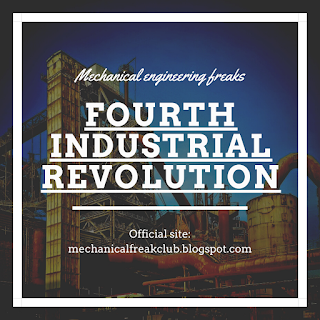



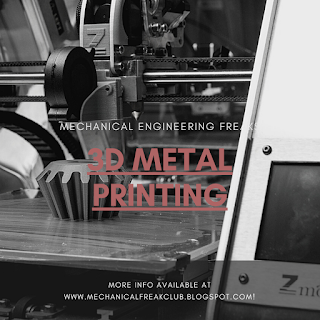
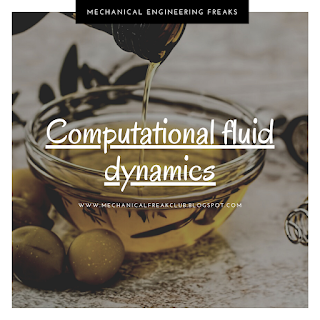
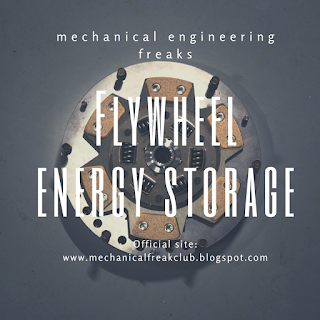
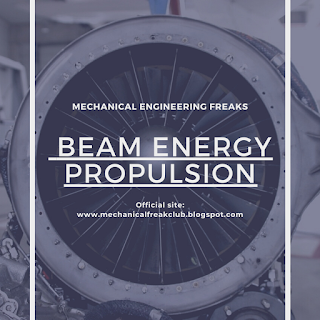

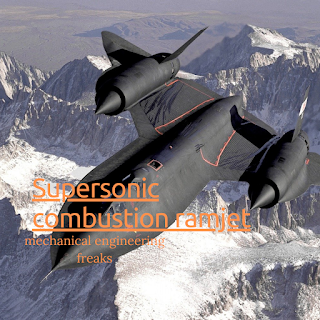
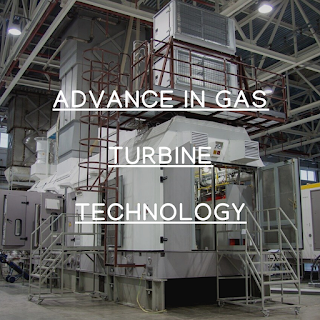
3 Comments
This post is very useful to us thanks for sharing.
ReplyDeleteThank you for your wonderful article it helps me a lot.
ReplyDeleteHi, Thanks for sharing this excellent Blog with us.Keep doing good work.
ReplyDelete